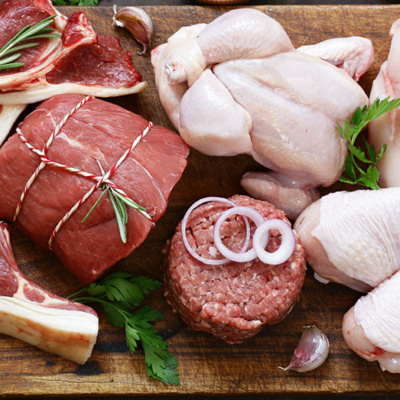top of mind news
- Meet Dayanny De La Cruz, The First Female Head Chef To Lead The Culinary Program At A Super Bowl
- Yes, There Really Is An Arugula Shortage
- Wine Tariffs: Restaurants Brace for Uncertain Impact
- The Operations Hurdles Facing Restaurants in 2020
- Report: Americans to Eat 1.4B Chicken Wings for Super Bowl
THE FARM
Poultry
Chicken production remains robust, with chickens processed recently up 4% (yoy), but heavier bird weights have boosted ready-to-cook supplies, with the 6-week production total up 8% from last year. While data continues to suggest that near-term broiler production schedules will remain robust, producer margins are starting to fade amid struggling breast meat prices. In fact, breast meat prices have been fading counter seasonally throughout early 2020, and this week was the lowest for any week in Q1 since at least 2000. Longer-term contracting could be considered. Upside price action for wings and leg quarters have slowed, but strength should resume deeper into the winter.
Beef
Mid-January packer production schedules surprised the industry, with beef output last week jumping 2.5% over the previous week and were 7.3% more than last year. Wholesale beef sales are robust, with movement in the more deferred timeframes remaining the most active. Despite the recent sell-off on the live-cattle futures, anticipate beef merchandising to remain active into the late-winter and early-spring. Seasonally, beef prices are expected to move mostly sideways into mid-February before escalating into the early spring, but this year’s seasonal upside development could be here earlier than history has shown.
Pork
Pork production last week was up 9.4% (wow) and was 9.9% over last year. Packers are likely pulling on hogs to fill schedules, but we’re not looking for the strong year-over-year output gains to continue. Still, amid larger production, wholesale pork prices are rising, with bellies and hams leading the way. The USDA pork cutout is up more than 13% (yoy), but larger supplies may pressure prices lower later this year (Q4). Anticipate U.S. pork export interest to be robust, but the current coronavirus problem is casting some doubt on those expectations.
THE SEA
Seafood
The salmon markets have been firm during the last several weeks due in part to smaller imports from Chile. During November, total U.S. salmon imports were up 2.1% from prior year with farmed filet imports up just .1%. Total salmon (10.7%) and salmon filet (5.4%) imports from Chile during the month were both lower than 2018. U.S. salmon imports could improve in the coming months. This may temper any seasonal upside in prices.
THE GARDEN
Produce
The avocado market remains well supported. Demand is surging this week for the upcoming Super Bowl. Further, there was little to no growth in avocado imports from Mexico last week. History suggests that avocado prices may remain firm. The Hass 48 count avocado market has averaged flat to higher during February six of the last nine years. Tomato supplies from Mexico remain deficient. U.S. tomato imports last week were 15.5% less than prior year. Tomato supplies are expected to improve soon. Tomato prices have averaged below January during February in six of the last eight years.
THE KITCHEN SINK
Dairy
The spot butter market this week is the lowest in 39-months. Per the USDA, butter inventories in December were 5.9% larger than the prior year, but it was the smallest build for the month since 2016. Butter prices may still fall in the near term, but some long-term forward buying can be considered. The cheese markets are experiencing weakness, but cheese block prices are still inflated for January. Domestic cheese stocks on December 31st were down 2.2% from 2018 and it was the largest drawdown for the month since 1987, signaling solid usage. This year’s seasonal price declines for cheese may be tame.
Grains
The soybean oil and palm oil futures markets have fallen sharply during the last week due in a large part to consumption concerns in Asia. The coronavirus has dampened celebration events and food consumption for the Chinese New Year holiday. There could be more downside potential in food oil prices in the near term.
Oil
The petroleum markets are under selling pressure due largely to the coronavirus outbreak mostly in China, which is tempering petroleum demand, and flight schedules have been reduced. Expect more volatility in the petroleum markets.














